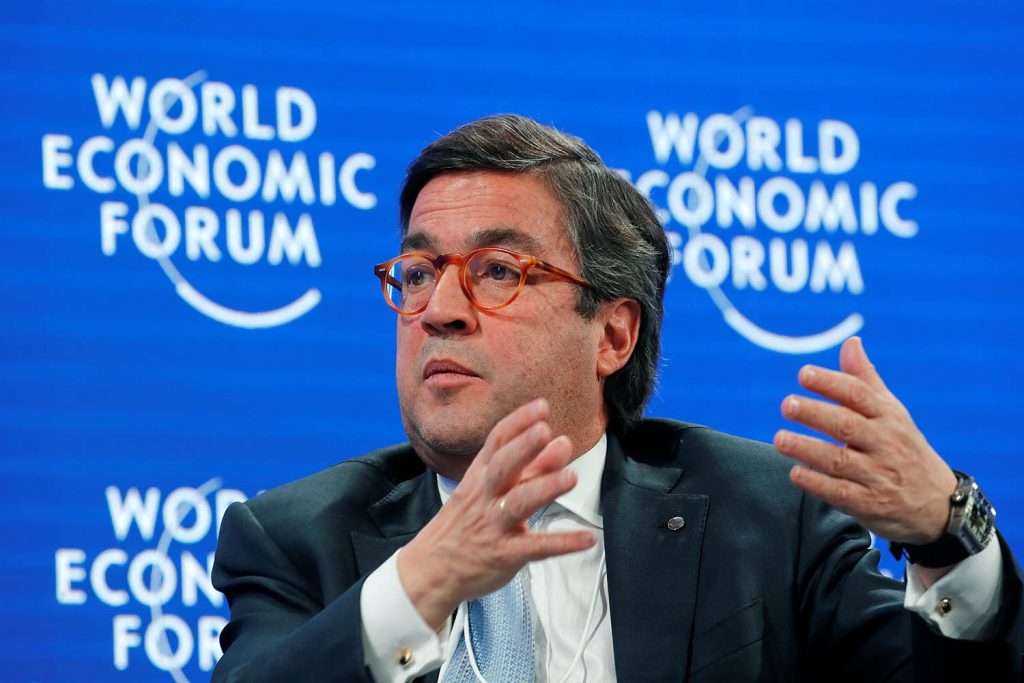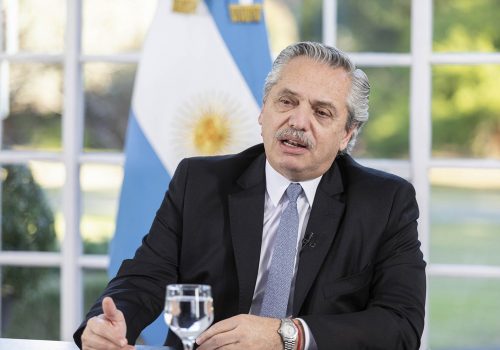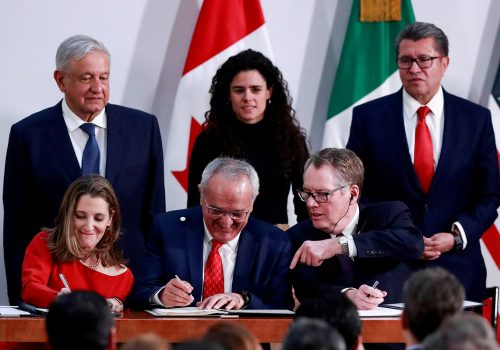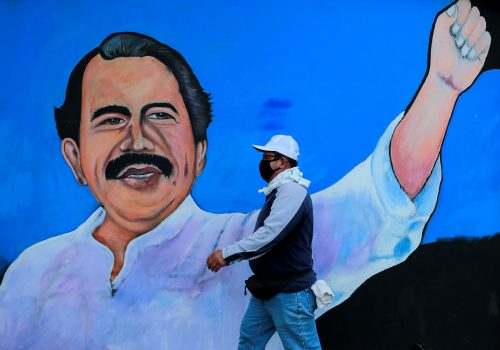With just two weeks left to go in his nearly fifteen-year tenure as president of the Inter-American Development Bank (IDB), Luis Alberto Moreno warned that Latin America may be feeling the effects of the COVID-19 pandemic for years to come. Actions taken throughout the region to control not only the pandemic, but also “the spread of poverty [and] the spread of unemployment,” have “increased debt to households, to governments, and to businesses,” Moreno explained, while the restrictions of movement and commerce imposed to curb the spread of the virus will make it more difficult for Latin American economies to cope with this debt once the initial phase of the crisis is over.
While the pandemic continues to bring intense macroeconomic and social stress to the region, it has also spurred adaptation and presented new economic opportunities for the entire Western Hemisphere, Moreno argued. If governments and business leaders can work together, he stressed, a new slogan for the region can be “not just ‘Make it in America,’ but ‘Make it in the Americas.’”
Moreno spoke on September 14 during an Atlantic Council Front Page event. The appearance launched a new project by the Adrienne Arsht Latin America Center and the Scowcroft Center for Strategy and Security’s Foresight, Strategy, and Risks (FSR) Initiative, in partnership with the IDB, to “map potential scenarios and provide recommendations for the region in shaping Latin America and the Caribbean’s post-COVID future,” Adrienne Arsht Latin America Center Director Jason Marczak said.
For Moreno, that post-COVID future will be defined by how the region responds to the emerging debt crisis and how it adapts to the new opportunities of supply-chain diversification and digitalization. Here’s a deeper look at how Moreno envisions the post-COVID landscape:
Another “lost decade” for Latin America?
- Watch out for 2021: While many governments are focusing on the immediate effects of the pandemic, which could lead to gross domestic product (GDP) in the region falling by 9.4%, Moreno warned that a further hit will come in tax season next year. The “contraction this year of course is going to make [a] recovery more difficult because tax returns that you see this year are coming from [economic activity] last year,” meaning that governments may find themselves even more cash-strapped as tax revenue drops in 2021. Moreno added that some form of government restrictions to curb the pandemic could remain “probably into part of 2022,” potentially causing debt levels to climb further.
- Old debt compounds the problem: Latin America was already starting off in a poor position, Moreno explained, with average debt levels at 58 percent of GDP at the beginning of the year. With the compounding effects of COVID-19, he warned, debt across the region “could be as high as 75 percent within the next eighteen months.”
- This isn’t 2009: While Latin America was able to quickly pull itself out of the global financial crisis, this downturn will prove much more persistent, Moreno argued. “When the financial crisis came, the debt to GDP ratios were just under 40 percent,” he said. “We had essentially a roughly 0.5% fiscal surplus. That meant that it was truly a V-shaped recovery.” High commodity prices and growing demand from Asia gave Latin America “a lot of winds in its sails” when the crisis hit, allowing the region and other emerging markets to be the first ones to re-emerge from the recession. But when COVID-19 hit, “Latin America had not been growing for the last five years,” Moreno observed, and the stagnation will likely make it much harder to recover quickly.
- Specters of darker days: The rising mountain of debt could lead to “a debt overhang” for the foreseeable future, Moreno warned, echoing the struggle the region had with debt during the 1980s. “That essentially meant a lost decade for Latin America,” he argued, and unless the international community and regional governments can help alleviate the situation, the region could again find itself in prolonged economic stagnation. Even before the pandemic, Moreno added, many countries in the region witnessed widespread demonstrations about deteriorating public services, and many capitals may find it difficult to come up with the resources to alleviate these concerns.
Watch the full event here:
Opportunities in the crisis
- Make it in the Americas: Nevertheless,the COVID crisis has also provided a jolt that could snap the region out of the economic doldrums, according to Moreno. After waves of manufacturing jobs left North and South America for Asia, the travel and trade disruptions of the pandemic have caused many businesses to look for supply chains closer to home. With wages in Asia converging with those in Latin America, Moreno argued that the region could be a prime candidate for US businesses. He advocated for policymakers in the United States and Latin America to use this crisis as an opportunity to build “supply chains across not only industry but especially across services that can be incorporated and done within this hemisphere.”
- The strain of remote learning could produce a digital education boost: One of the toughest challenges resulting from the pandemic shutdowns has been the need to shift to remote learning for the region’s students. The transition has been particularly tough in Latin America, Moreno explained, because “not everybody has the luxury of having access to the kind of bandwidth that you need and more importantly the equipment you need [for] distanced learning.” But the region also has an opportunity to use this experience to improve its education system, which has been at the foundation of its economic growth for decades. “The pandemic has forced us all to accelerate [digitalization] that was already out there,” Moreno argued, and people have slowly become more adapted to virtual connection technologies. He suggested that governments place emphasis on deepening the virtual capabilities of schools, “getting more connectivity to universities,” and meeting “the demands of the labor market.” He pointed out that the digital skills gap continues to be a major cause of high unemployment and stagnation in the region, and more emphasis on virtual education can help provide the training needed to close that gap.
- Keep an eye on climate change: While attention is fixed on solving the coronavirus pandemic, Moreno also cautioned that the dramatic wildfires in the western United States serve as a reminder that policymakers should not forget the threat climate change will pose in the decades to come. He said he hopes that the attention paid to science during the pandemic will spill over into the climate-change debate, especially in Latin America, which has “40 percent of the biodiversity of the world.” He emphasized that there is significant economic opportunity in pursuing more green technology, especially for Latin American, which has abundant “natural capital” and boasts one of the world’s highest rates of hydroelectric power use, meaning policymakers should focus on making “the growth coming out of COVID…green growth.”
David A. Wemer is associate director, editorial at the Atlantic Council. Follow him on Twitter @DavidAWemer.
Further reading:
Image: Luis Alberto Moreno, president of Inter-American Development Bank, attends the World Economic Forum (WEF) annual meeting in Davos, Switzerland, January 22, 2019. REUTERS/Arnd Wiegmann



